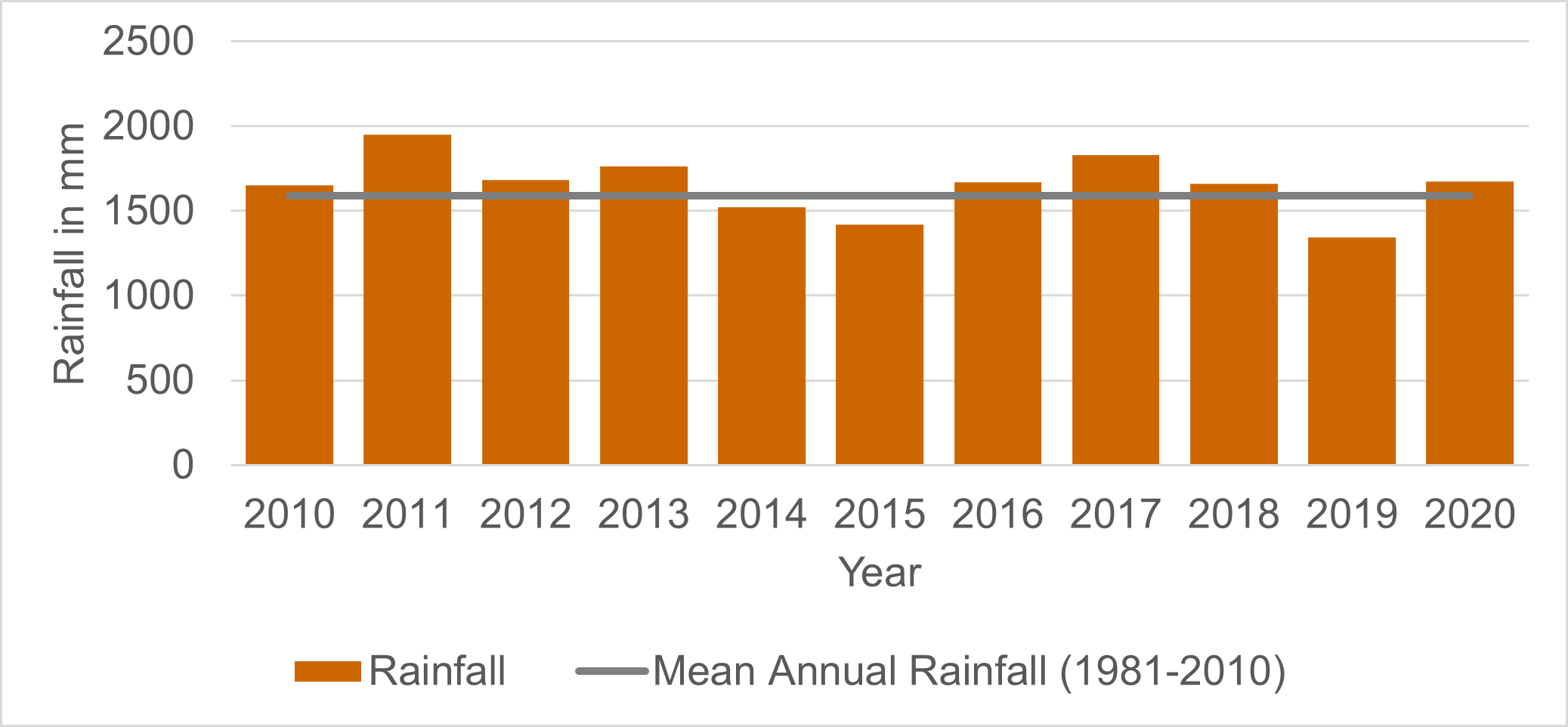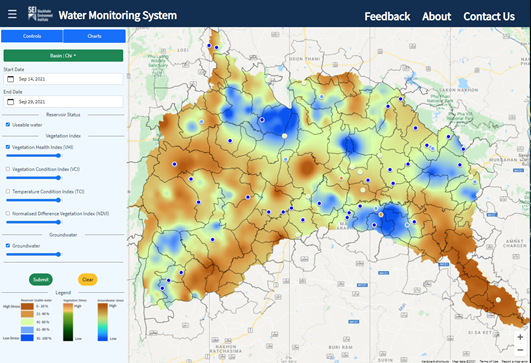Water monitoring system helps in drought management
SEI is developing a water monitoring system to address the existing institutional gaps in drought monitoring in Thailand and Southeast Asia.
During 2010-2020, Thailand experienced erratic rainfall pattern with below average rainfall for three years (2014, 2015 and 2019) and four years of “normal” rainfall (2010, 2012,2016 and 2018). This fluctuation has direct impacts on the water storage levels of reservoirs with cascading effects on electricity generation, agriculture, industries and domestic water use.
In 2019-2020, Thailand also experienced drought conditions with water scarcity in several provinces, a phenomenon that also affected other Southeast Asian countries. That drought was considered as one of the worst in the past 40 years[1] with 25 provinces declaring a disaster[2].
Water authorities had prioritized allotments for household use over many other sectors. One of the major sectors impacted by this event was agriculture which employs 31 percent of the country’s total employment[3]. The yields of the country’s major crops rice, rubber, and sugar were all affected, costing an estimated to cost THB 46 billion loss (as per Bank of Ayudhya's Krungsri Research[4]).

Rainfall trend of Thailand. Data source: Thailand Meteorological department[5]
These events highlight how fragmented institutional mandates and varying technical capabilities to monitor these extreme events can lead to significantly delayed responses. This further aggravates water scarcity causing a serious imbalance between water supply and demand in the region. The effects of the water imbalances have created inequalities in the distribution, allocation across the competing uses, and use of groundwater.
Existing drought monitoring systems within Southeast Asia provide information at regional level considering information from a single source: surface water level, satellite derived products or modeled climatic forecast models.
For better management, it is more helpful to have a cross-cutting platform providing information on the state of hydrological (surface and subsurface) and meteorological variables during the development, maturation, and dissipation of droughts. This is of great importance for crop and agricultural systems and the overall management of water resources to cope with drought, and for the effective preparedness for extreme event as well as mitigation and emergency measures.
SEI is developing a Water Monitoring System to address the existing gap in the drought monitoring systems and response through integration of diverse data sources and types with cloud-based systems to simplify the processing mechanism for government agencies to derive actionable information.

The Water Monitoring System provides access to daily stream and reservoir water levels from Royal Irrigation Department (RID), Electricity Generating Authority of Thailand (EGAT) and Mekong River Commission (MRC) along with ground water status based on Department of Groundwater Resources (DGR). These daily observations are clubbed with Satellite derived vegetation condition indicators like Vegetation Health Index (VHI), Vegetation Condition Index VCI, Temperature Condition Index (TCI) and Normalized Difference Vegetation Index (NDVI). Satellite indices are extracted from Landsat 8 and is available every 16 day for pan country. Integration of three types of datasets helps in understanding water requirements by vegetation as well as assess status of surface and ground water availability at basin level.
 By
By 

 Read more about SUMERNET
Read more about SUMERNET
